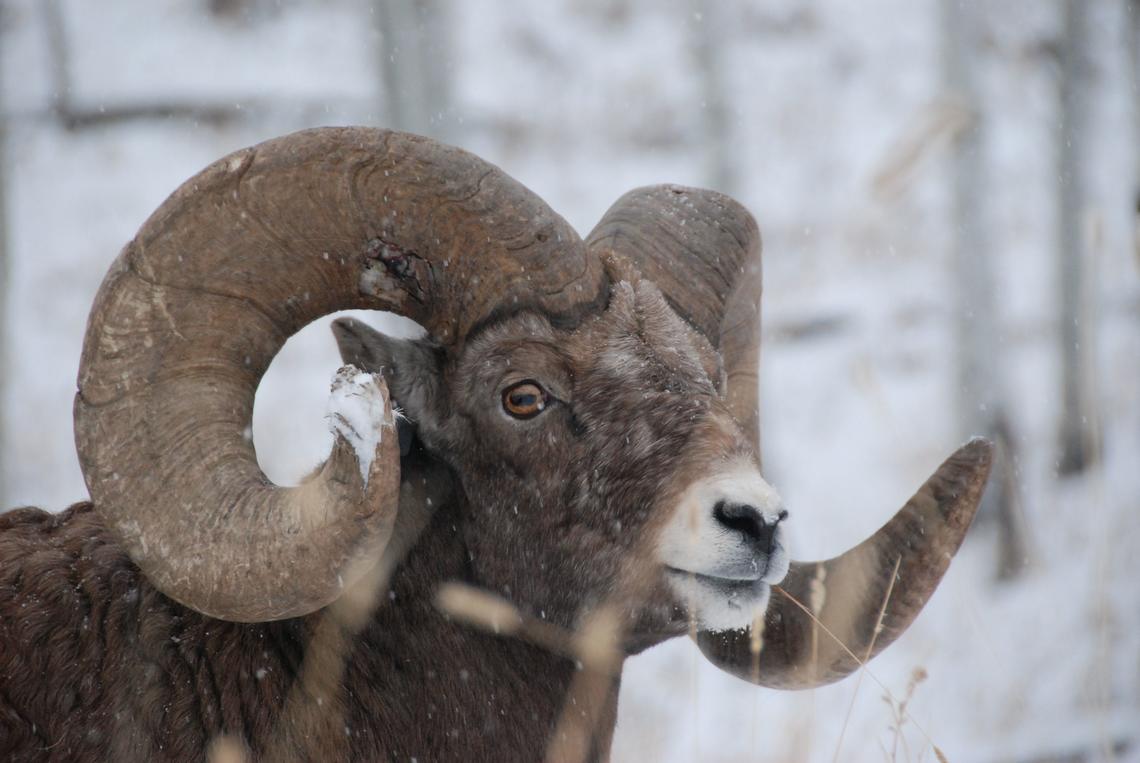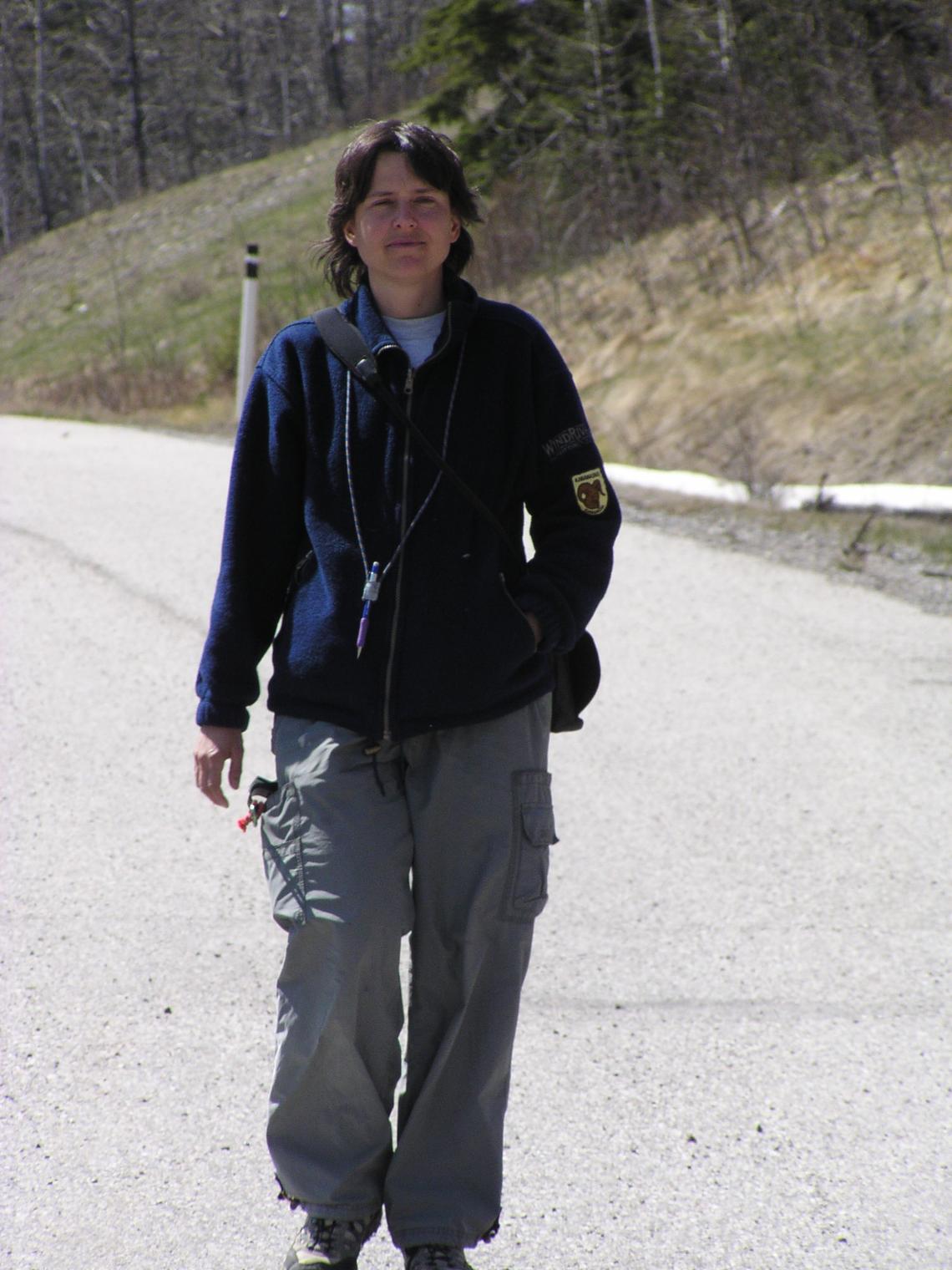March 19, 2015
World record bighorn sheep captured researcher's heart

As a lamb, ram 706 was smaller than other males but by 2005 he had grown strong, with large horns.
Peter Neuhaus
In life, bighorn sheep ID 706 captured the attention of Kathreen Rucksthul, an associate professor in the Faculty of Science. His death in 2010 and confirmation last week that he was history's largest ram has garnered him a rather larger audience of admirers.
Ruckstuhl’s work on the behaviour and ecology of Rocky Mountain bighorn sheep began in 1994 in Sheep River Provincial Park as part of her PhD research at the University of Sherbrooke. Transformed by her early encounters with bighorns, she returned to Alberta following her graduation and never turned back.
“My initial work with the bighorns was on the question of why males and females spend most of their time in different groups and only come together during the rut season between November and December,” says the scientist, who teaches in the Department of Biological Sciences and is also associate director of the Biogeoscience Institute at the University of Calgary.

In 2008, poachers recognized the animal’s potential as a trophy and shot him, but missed by inches.
Kathreen Ruckstuhl
Long days spent observing the animals in the wild
“I conducted detailed observations of sheep groups for up to 14 hours at a time,” she recalls. “In the process, I discovered the many personal traits and behaviours of each animal and supplemented this information with the data gathered through their tag identification.”
In 1998, she had her first encounter with ram 706 whom she helped tag after his birth.
“At that time, I was also conducting a long-term study on ram and female associations and behavioural interactions between pairs of individuals. I was basically collecting data on the bighorn’s social network or 'Facebook' if you like.”
The nature of her work helped her gain more insight into the habits of ram 706 who stood out as always being with one particular peer, ID 310.
“They stayed like this for many years,” she explains, “eventually jointly defeating the top-ranking ram after a long battle and climbed to rank number 'one and one' in the hierarchy. They never fought each other.”
Although ram 706 was not bigger than other males as a lamb, by 2005, “he distinguished himself with promising big horns and a strong body,” Ruckstuhl remembers.
Poachers within the Sheep River Provincial Park recognized the animal’s potential and shot him in 2008, missing his skull by mere inches.

Kathreen Ruckstuhl has studied bighorn sheep in Alberta for the past 21 years.
Kathreen Ruckstuhl
Highway collision cost ram 706 his life
It wasn’t until 2010 that 706 faced his fatal end after being struck by a car in a highway collision near Longview, Alberta.
“I heard the news of his death about two weeks after it happened,” she says. “It was shocking and I certainly looked back at his life as an individual and what he had achieved.”
Ruckstuhl and Fish and Wildlife bighorn sheep expert Jon Jorgenson promptly went to the ranch where he was found and took the initial measurements of the animal’s skull and horns.
Although their initial measurements confirmed the significant size of the animal’s horns, it took five years for the Boone and Crockett Club — the oldest wildlife conservation organization in North America — to officially measure 706. The new world record size of 209 4/8 inches was confirmed just last week.
“Measurements can only be assessed after some time when the horns and bones shrunk to their final size,” explains Ruckstuhl. “When we did our early measurements in 2010, we thought he was a top trophy ram but didn’t think he would be number one in the world,” she admits.
According to Boone and Crockett’s rankings, the world’s top six bighorn rams ever recorded are all in Alberta.
“Alberta’s bighorns have what it takes: good genes combined with perfect conditions,” says the researcher. “Some areas in Alberta with plenty of forage, particularly during the winter, produce the biggest rams.”
As Ruckstuhl reflects on bighorn 706, she notes the implications of the animal’s life and death as more than just a story about friendship and glory.
“He taught us how significant the social network is for rams, the importance of horn growth, and the necessity for protected areas in which they can thrive. Bighorns are our provincial mammal and we all have their health and well being at heart,” she concludes.
